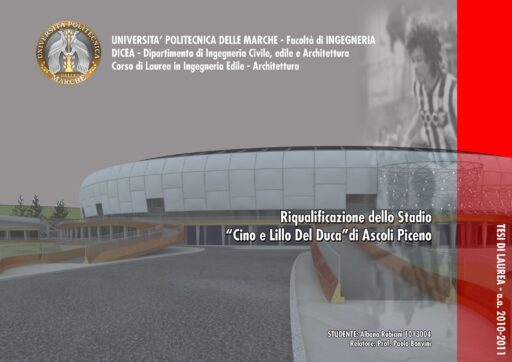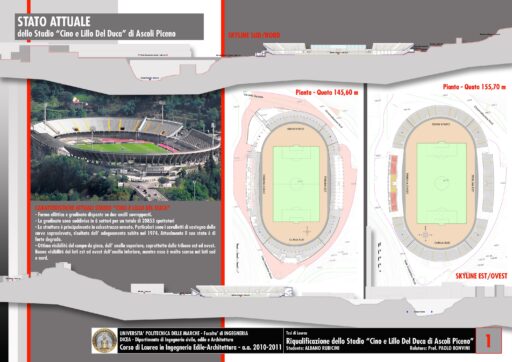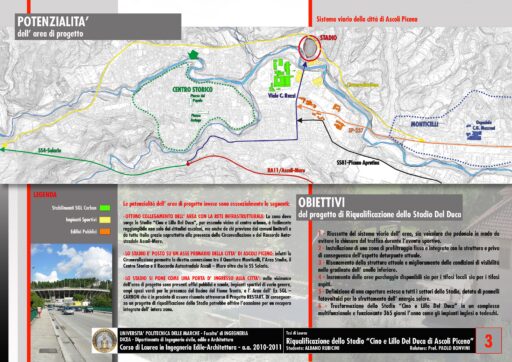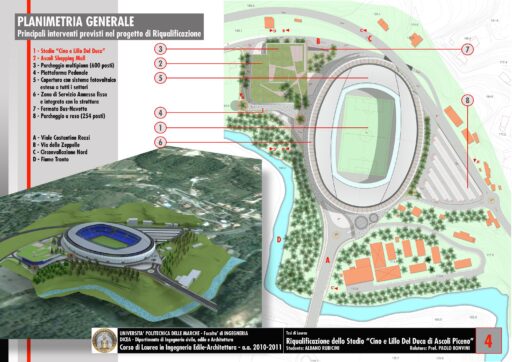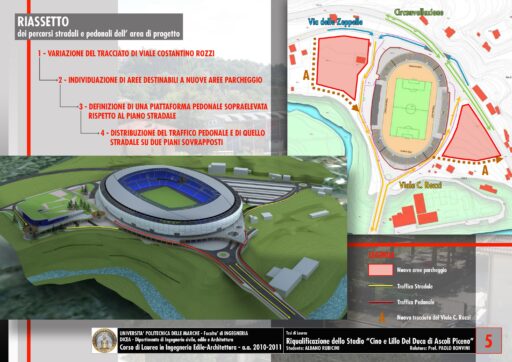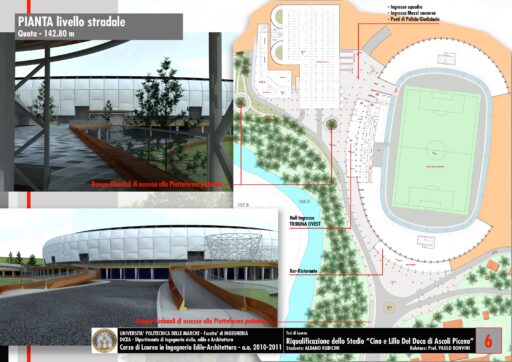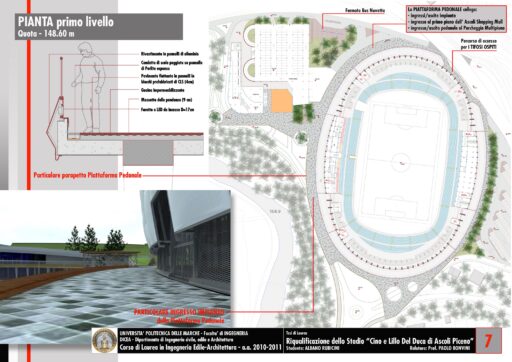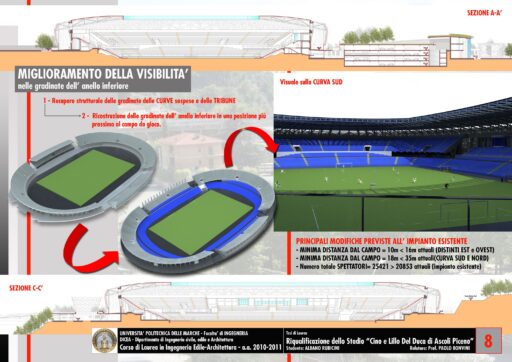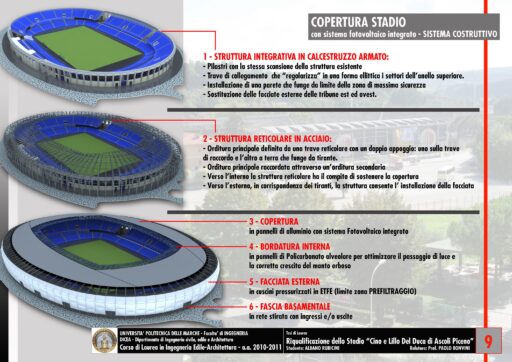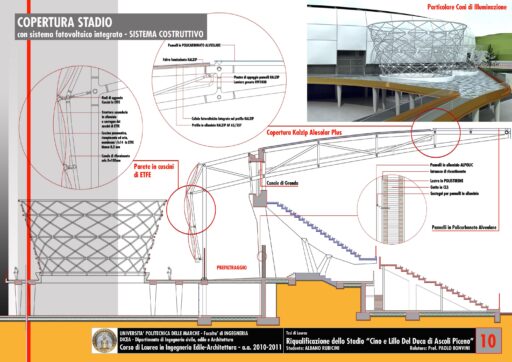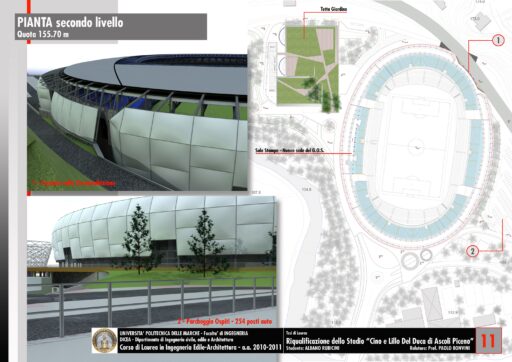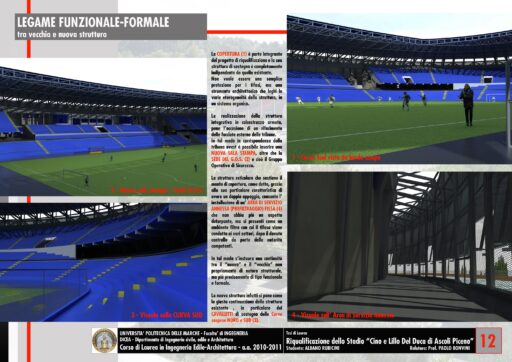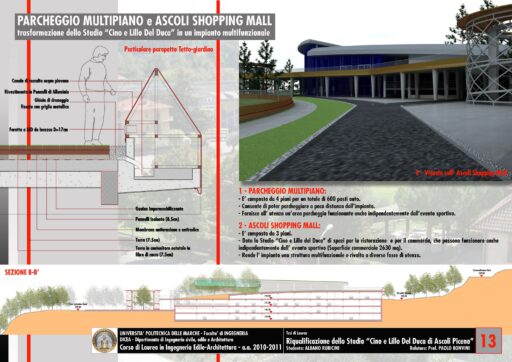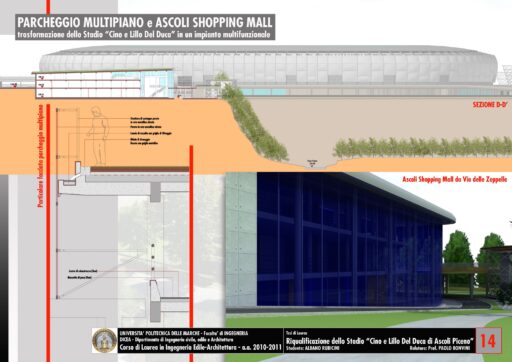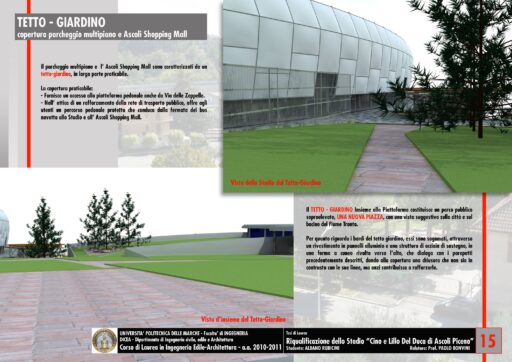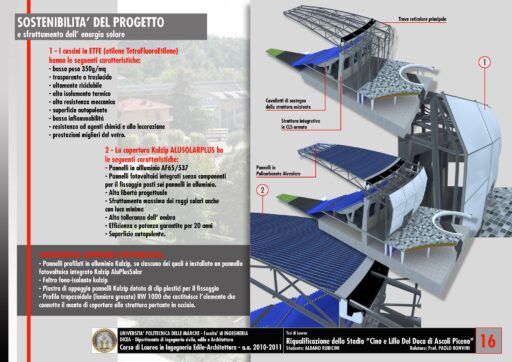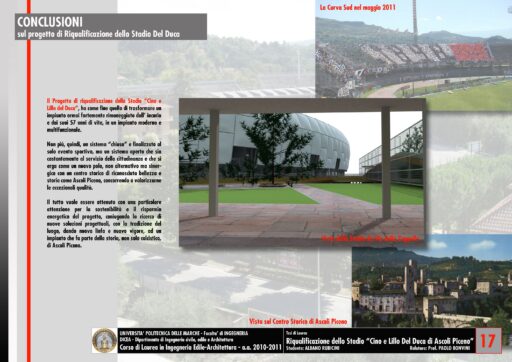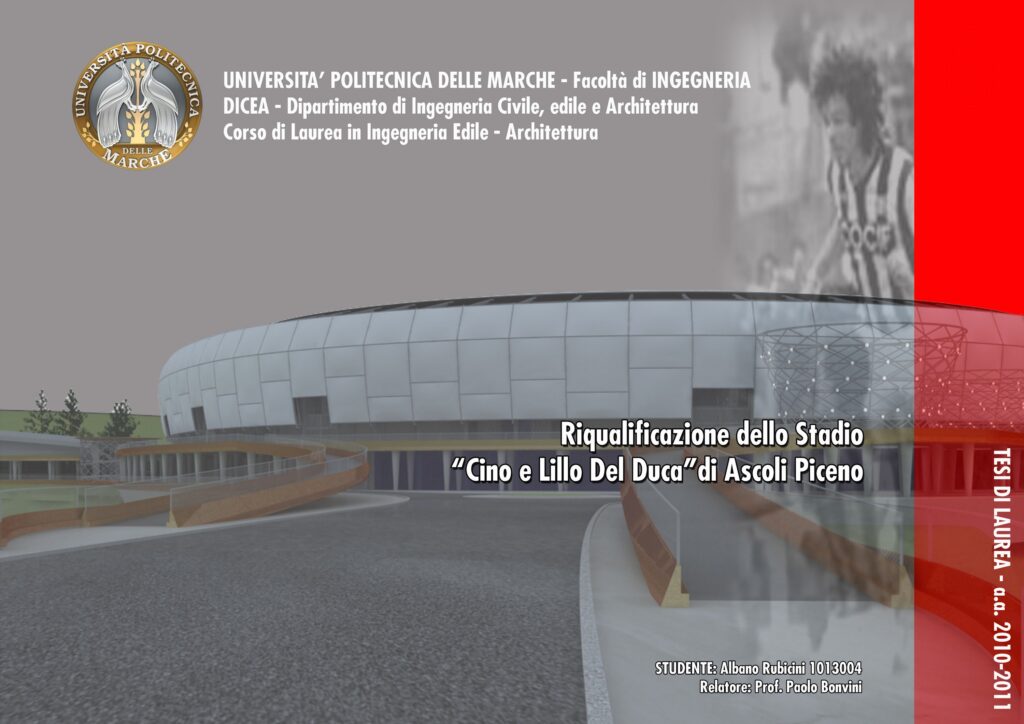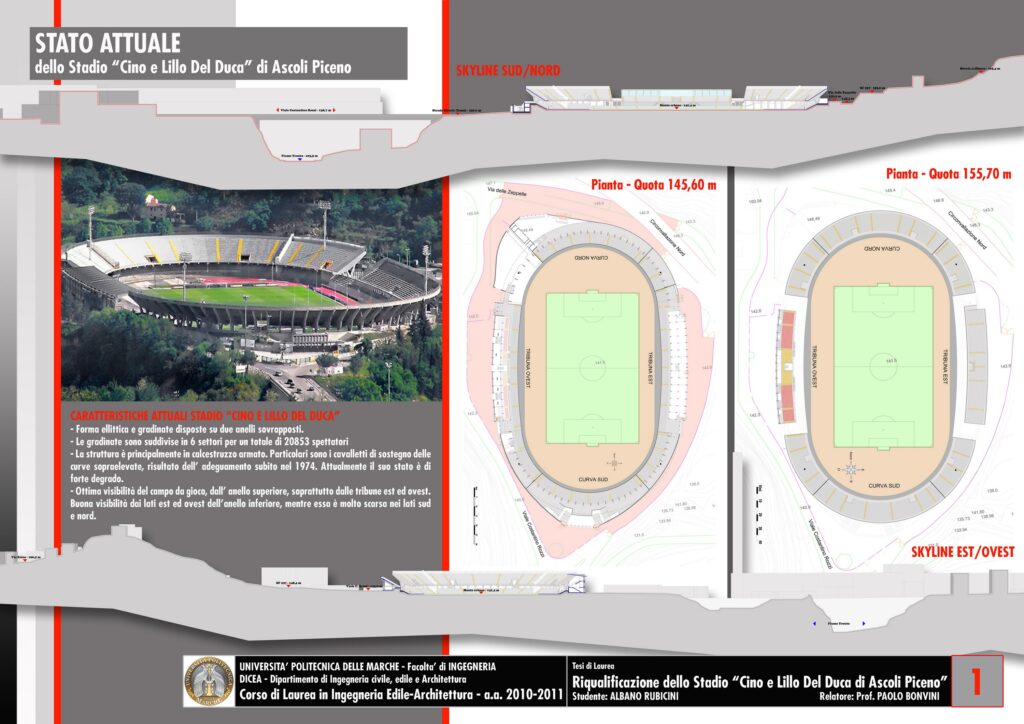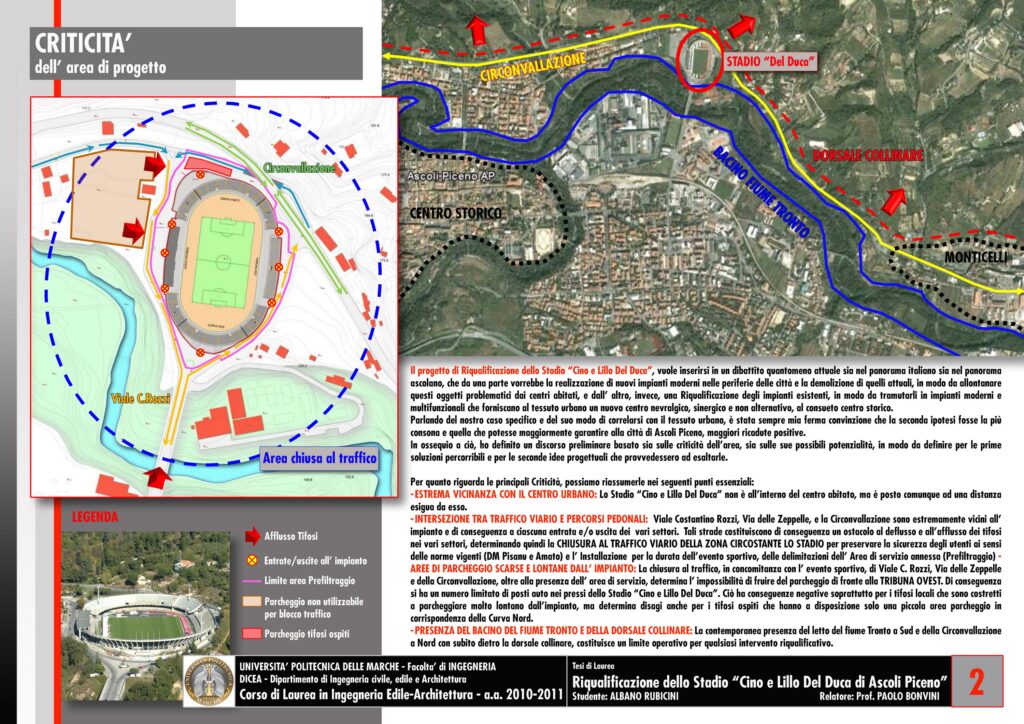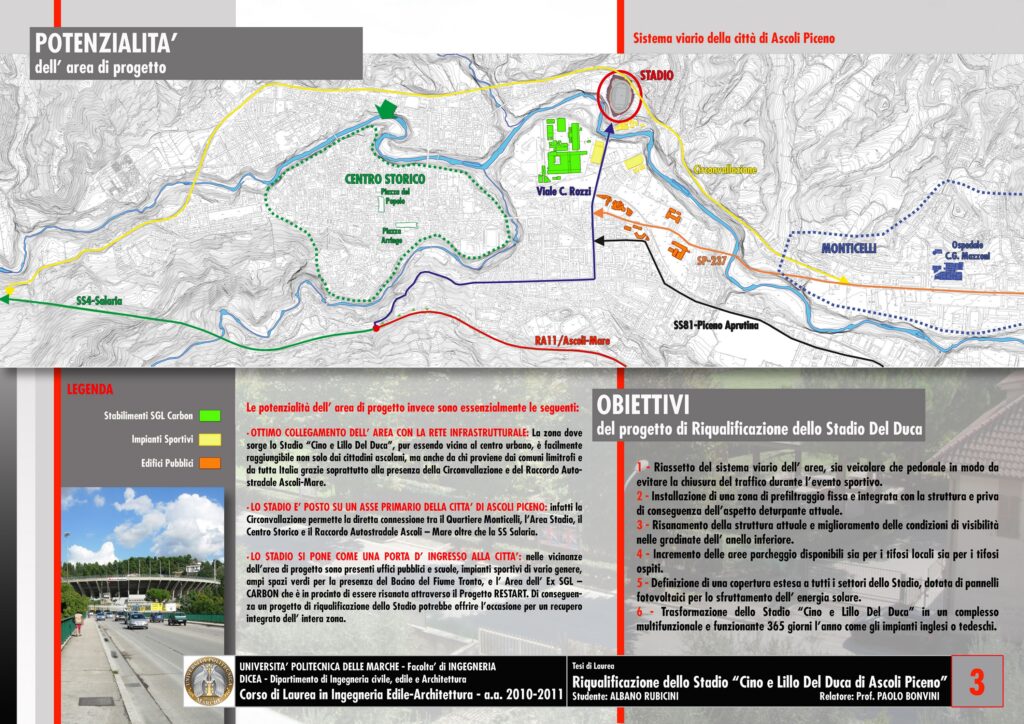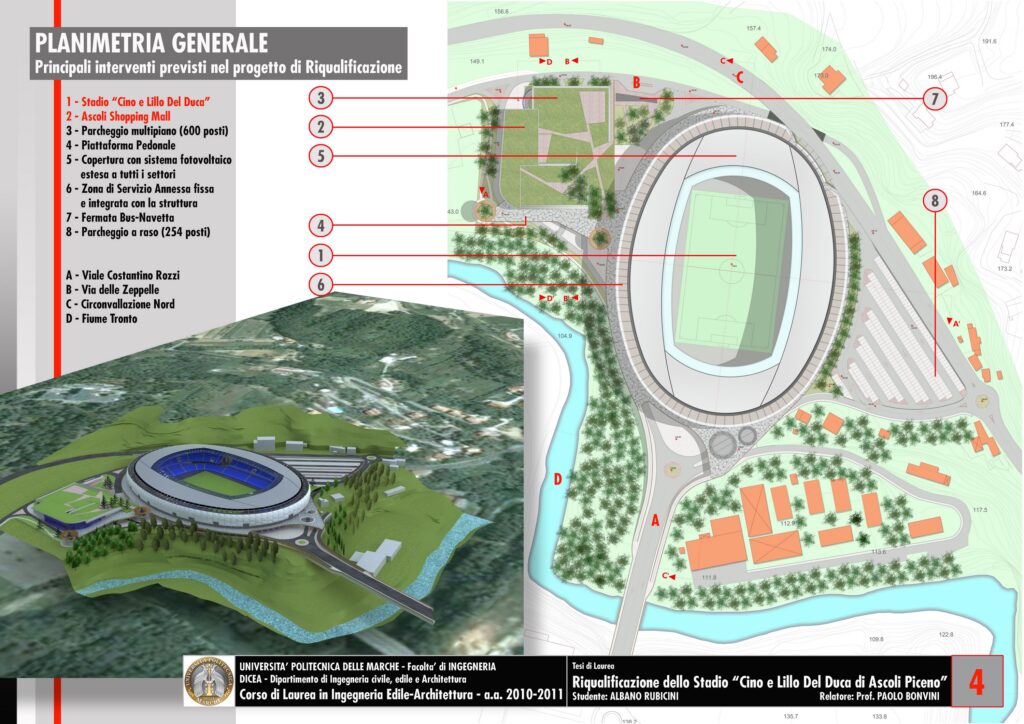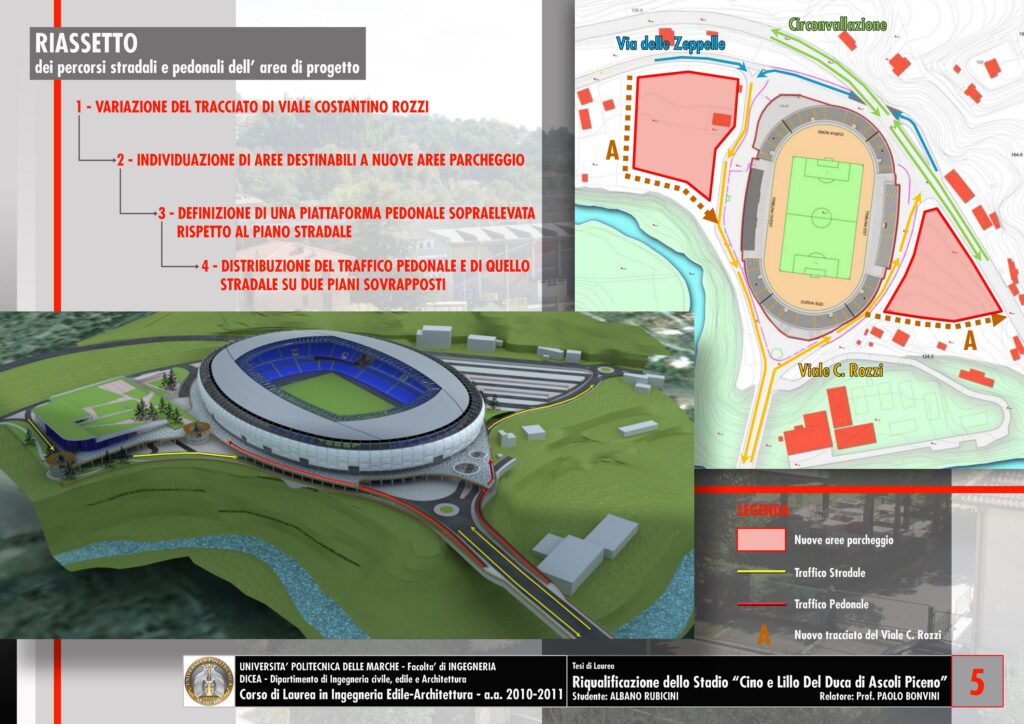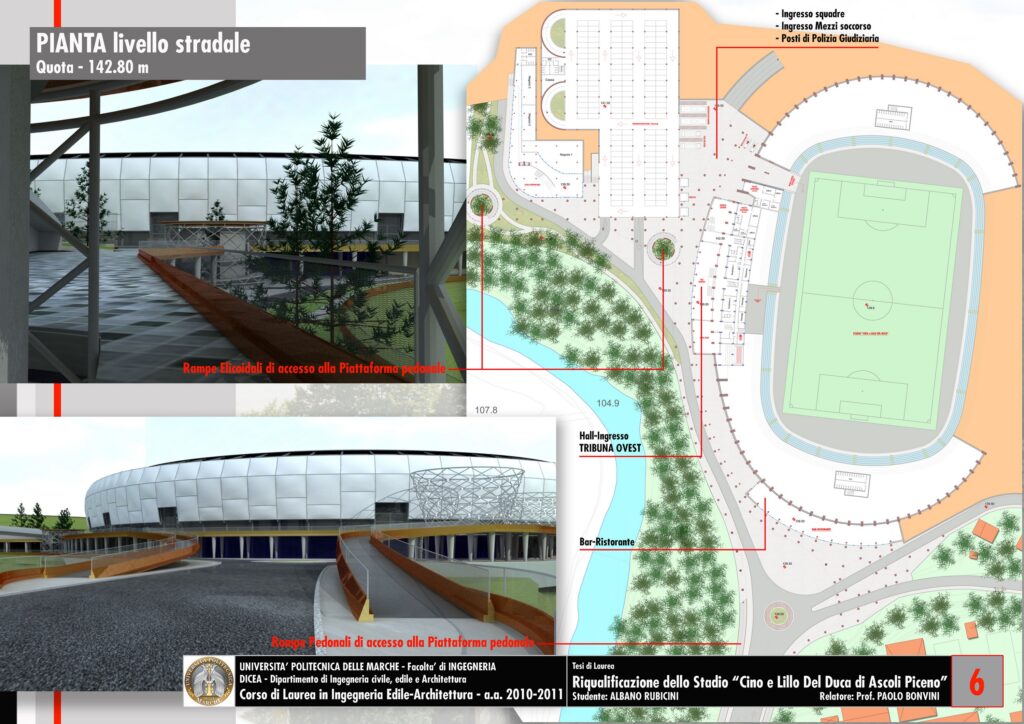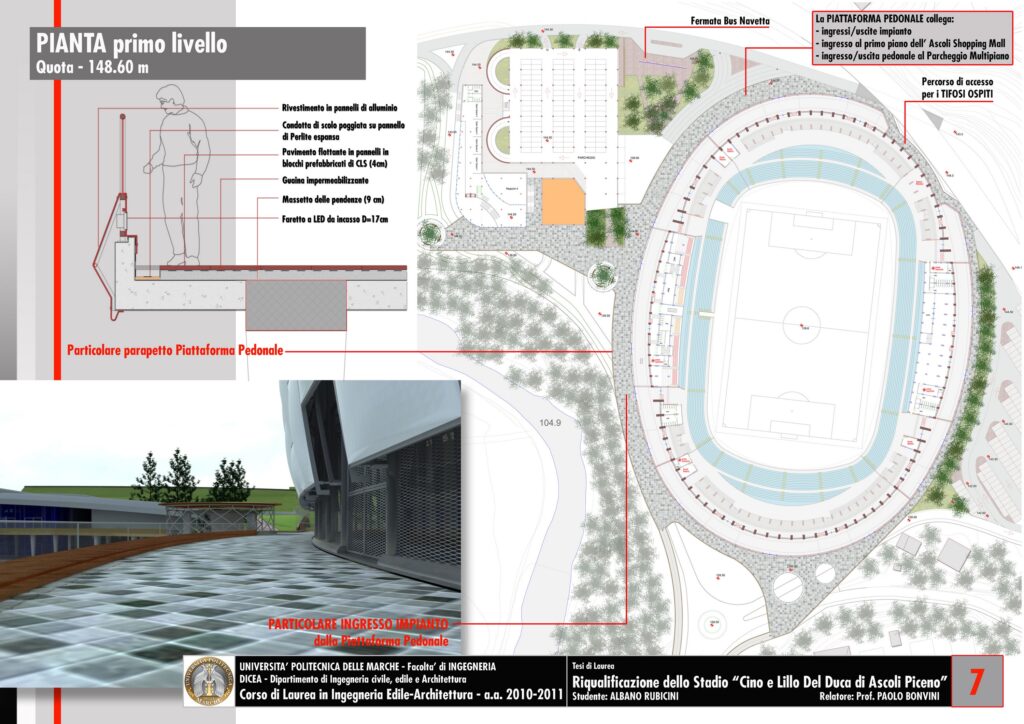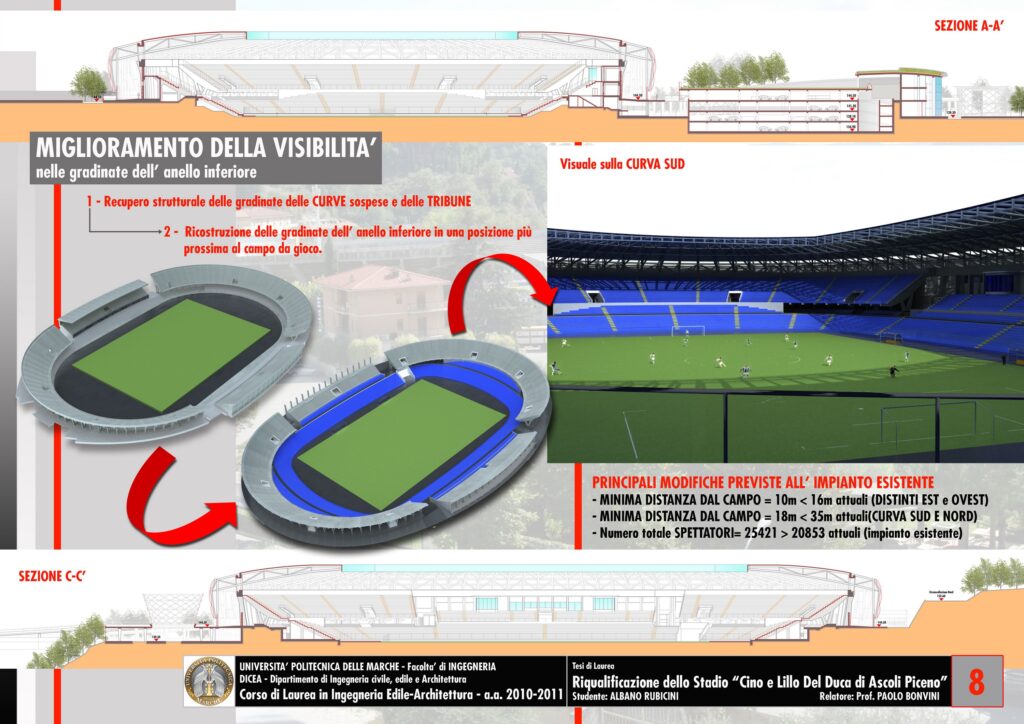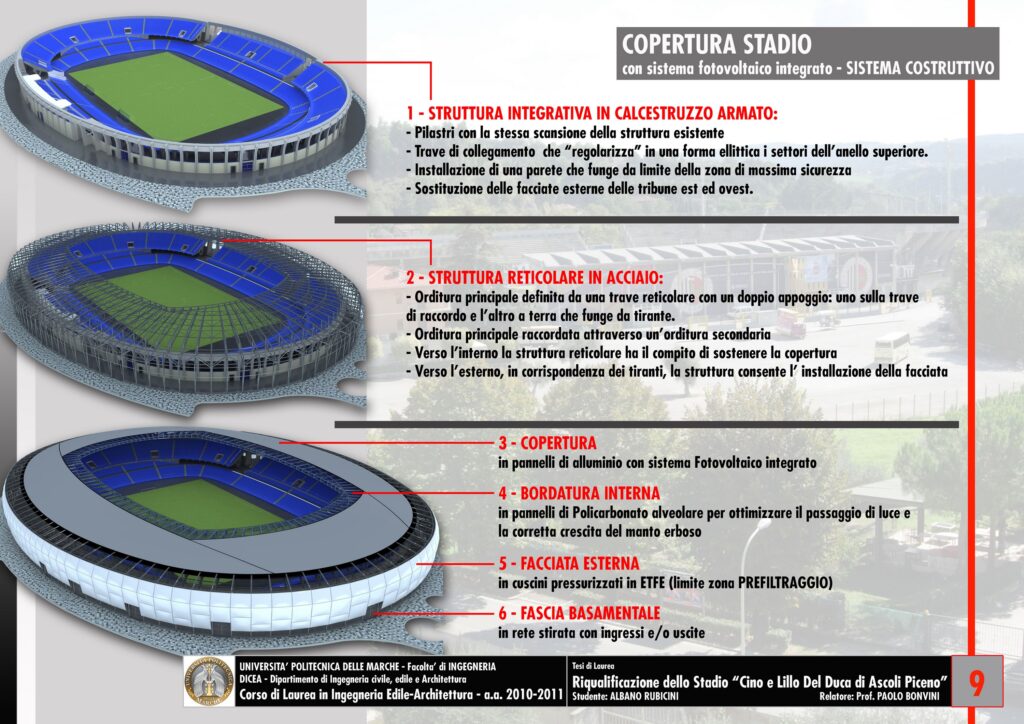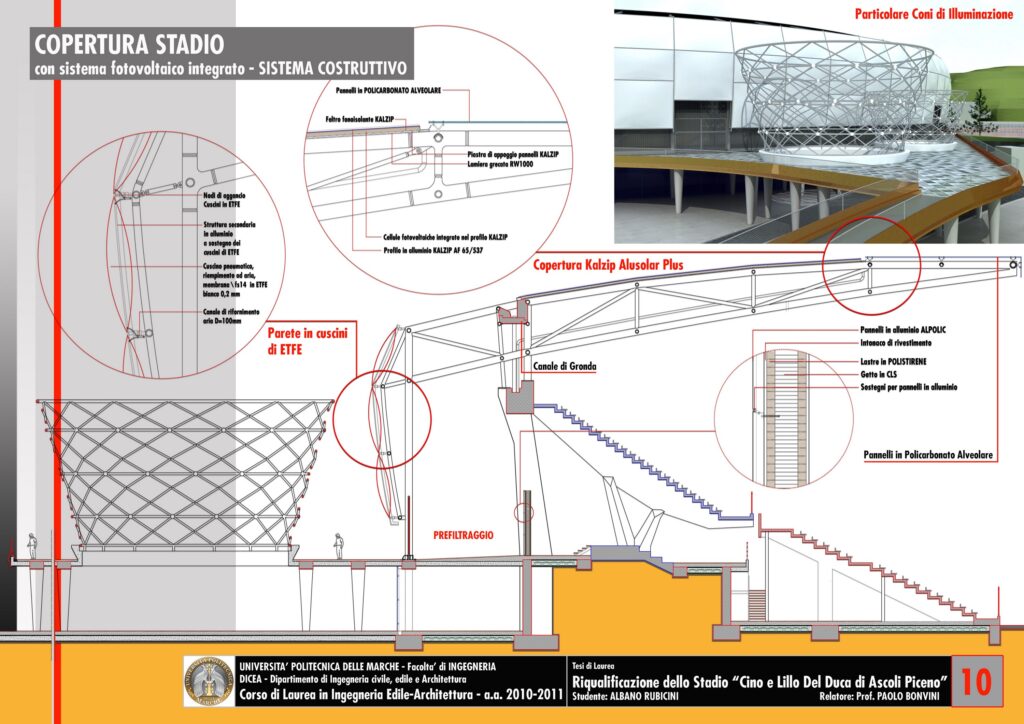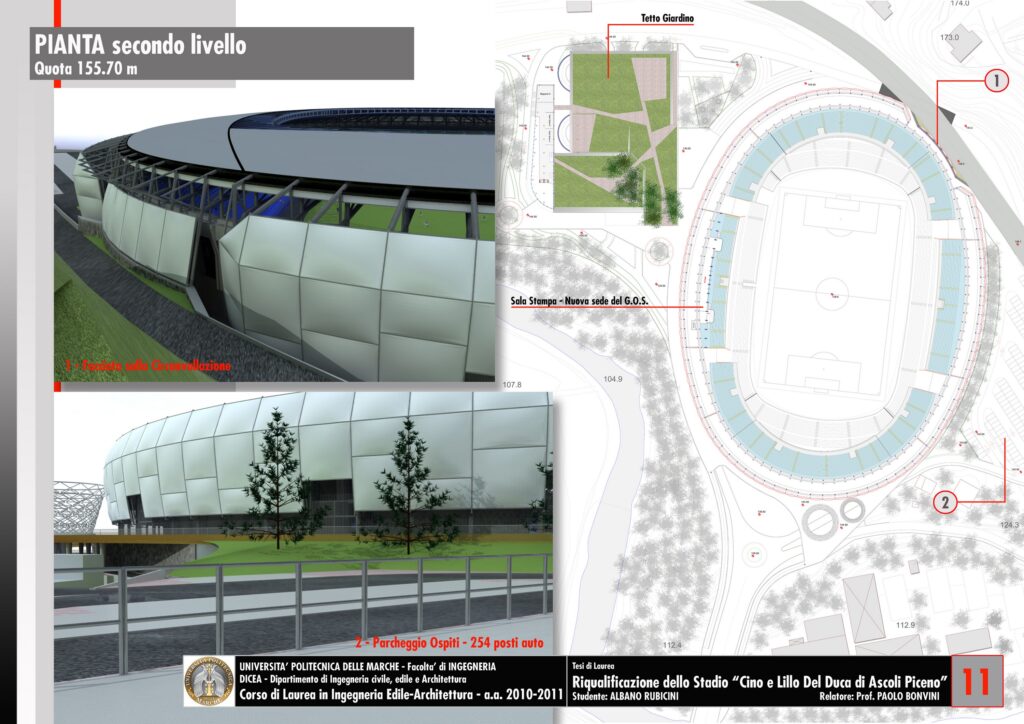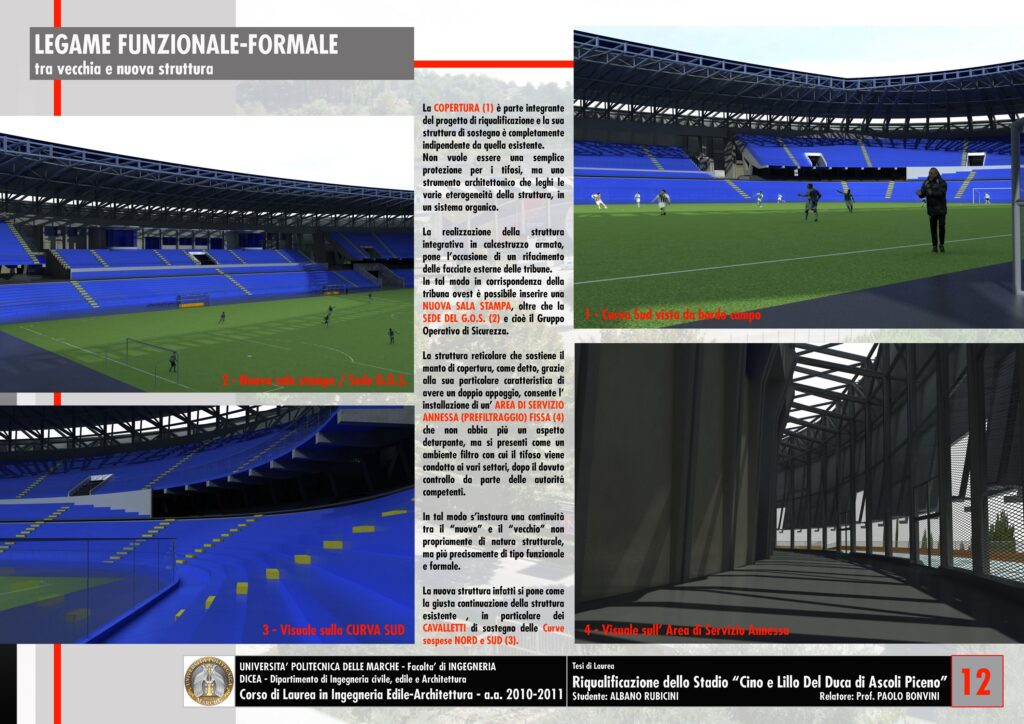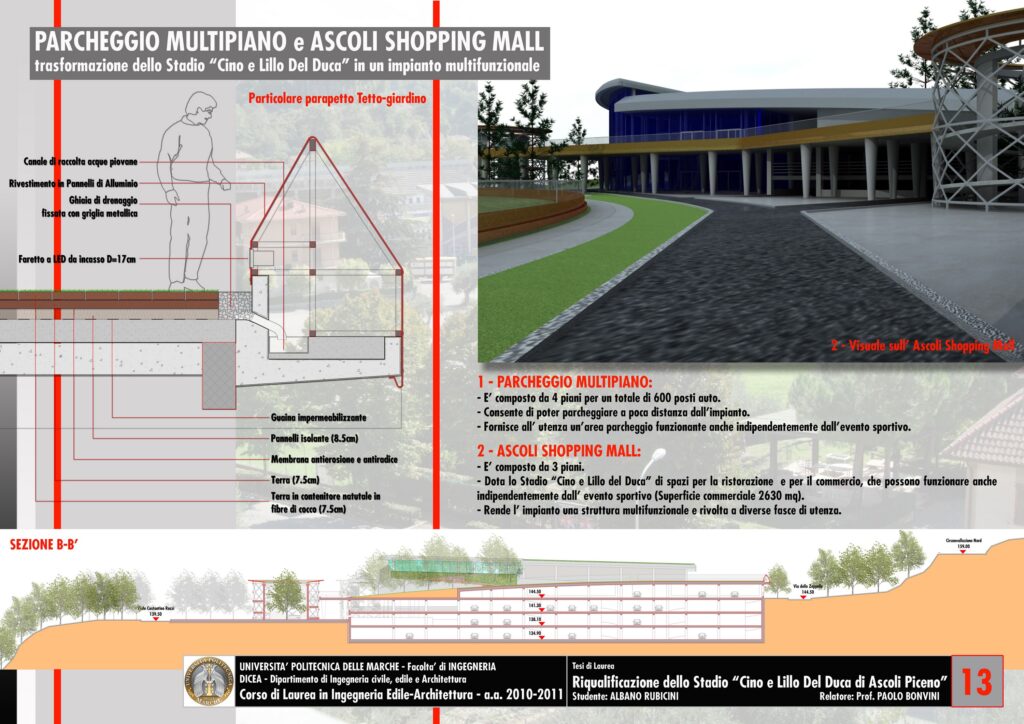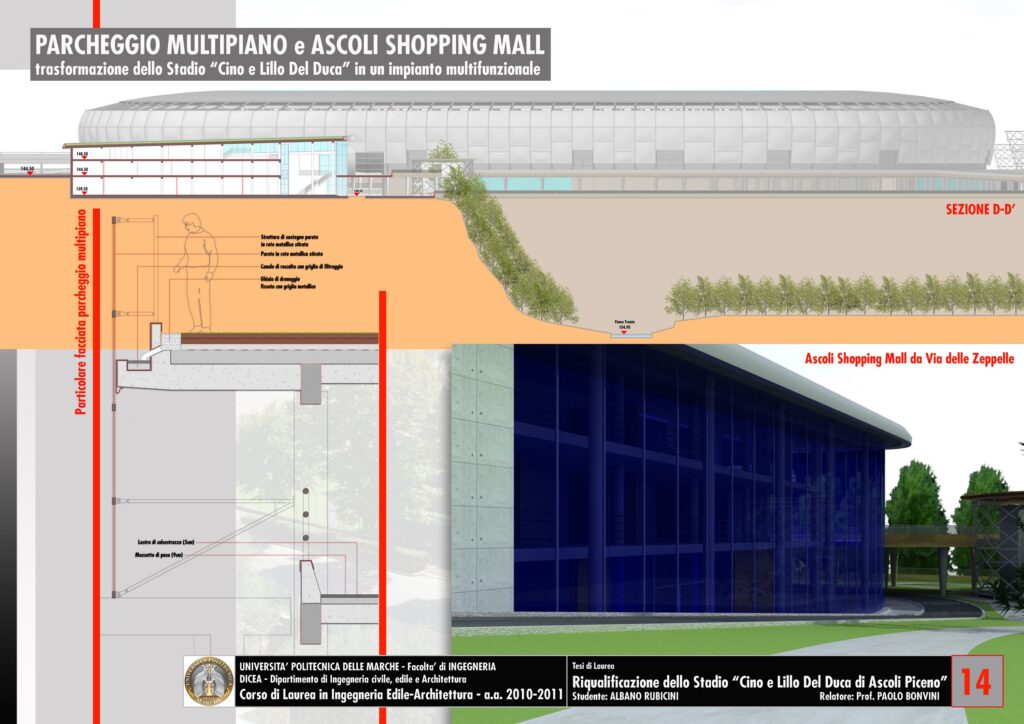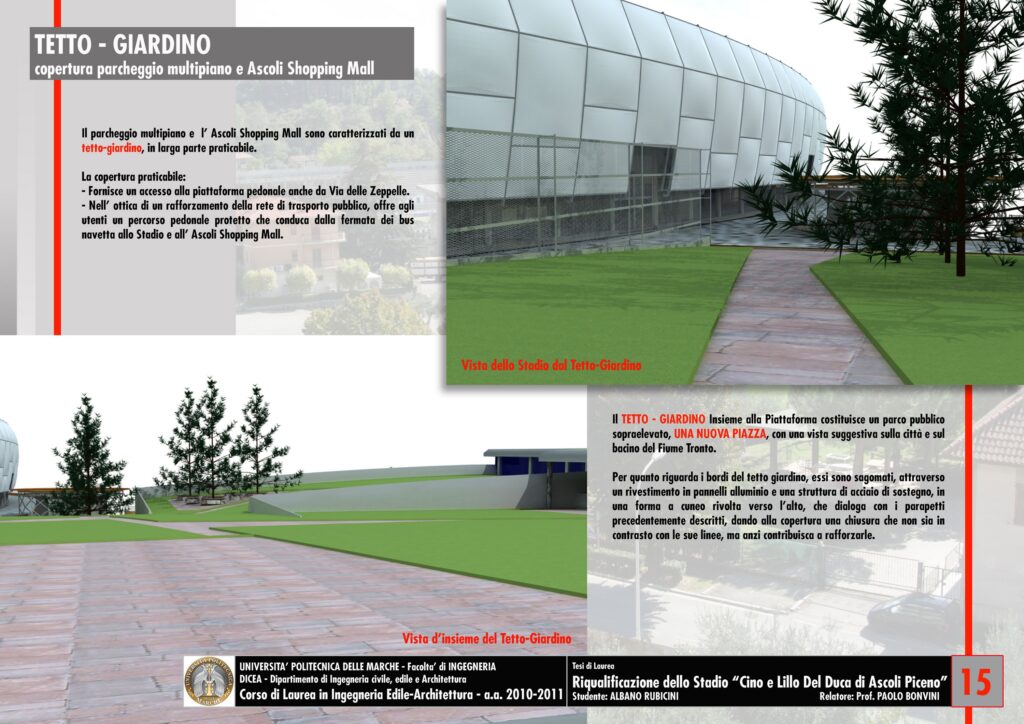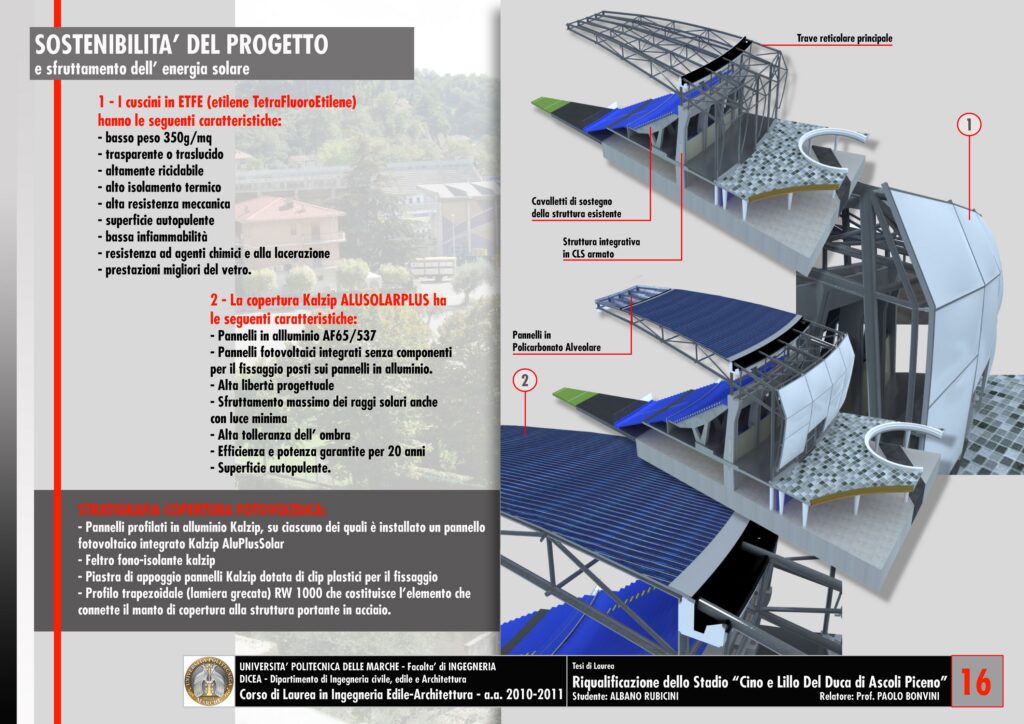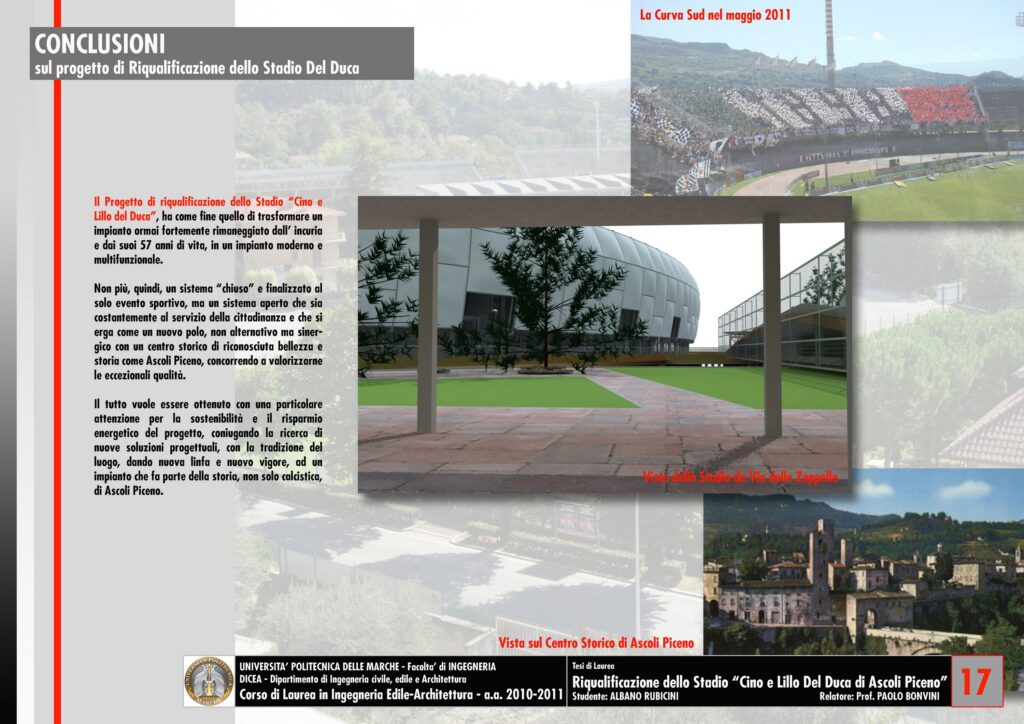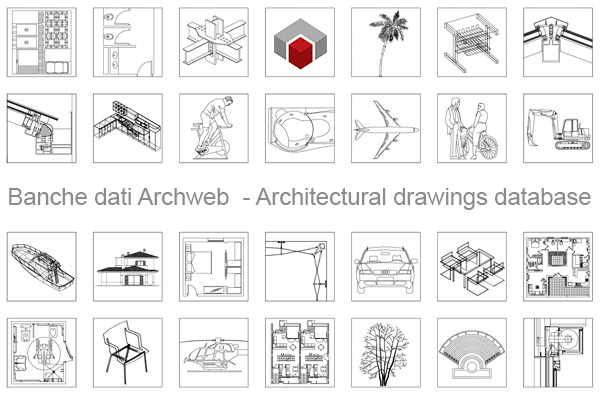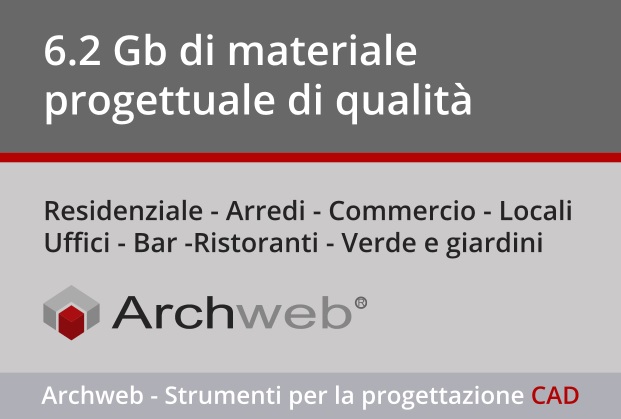Albano Rubicini
Degree thesis in Architectural Design
Redevelopment of the "Cino e Lillo Del Duca" stadium in Ascoli Piceno
Degree thesis by Albano Rubicini
Contact email: albano.rubicini@alice.it
POLITECNICA DELLE MARCHE University - Ancona Faculty of Engineering
Five-year master's degree course in BUILDING ENGINEERING-ARCHITECTURE
Speaker: Prof. Arch. Paolo Bonvini
A.A. 2010 - 2011 (Date: October 21, 2011)
General and synthetic lines of the thesis:
In Italy the problem connected to the redevelopment of the old football facilities is becoming more and more important, most of the times characterized by a large degradation both from an architectural and structural point of view and from a functional point of view.
In the Italian context, in fact, the stadiums constitute foreign bodies within the urban apparatus, "alien" that in many cases the city institutions would like to transfer to peripheral areas, far from the heart
of the city.
With this logic, undoubtedly many of the problems associated with the punctual increase in vehicular and pedestrian traffic concomitant with the sporting event are resolved, as well as
to the reception of all that mass of fans who come from the city, or from the surrounding countries, to the facility to attend the sporting event, and which the provisions of the Pisanu Decree have helped to accentuate,
determining, for older systems, also the need to block city traffic in large sections of the city.
By removing these systems from the urban center, however, the city ends up impoverishing an opportunity for development for degraded and forgotten areas of the same city fabric, in which the Stadium could
constitute the fulcrum for a reconquest of these important brownfields, returning them to citizenship. This process is very developed both in England and in Germany.
The present redevelopment project of the "Cino and Lillo Del Duca" stadium in Ascoli Piceno has precisely these purposes. The ultimate goal is to transform an old and degraded facility into a stadium
modern, multifunctional and that therefore addresses 365 days a year to all citizens and not only to fans who come to the stadium every 15 days to attend the sporting event, through the creation of spaces
commercial and completely at the service of citizenship, consequently also providing new meeting places in addition to those already existing in the city.
This aim is pursued both by acting on the current road system, by re-modulating it so that it is able to divide pedestrian and vehicular flows into two parallel and non-intersectable planes, with the right consequences
from the point of view of safety, both by operating on the existing sports facility, recovering it structurally and at the same time improving it both aesthetically and functionally by adding a new one
leather and a solar cover that seeks technological progress in the field of architecture and engineering, the best solutions for an economic sustainability of the system,
environmental and energy, at the same time creating a modular system applicable in most of the Italian plants that are subject to redevelopment.
Albano Rubicini
Author
Category Albano Rubicini































































